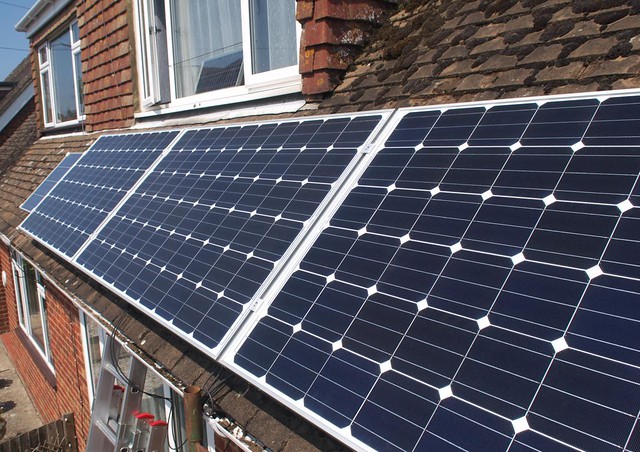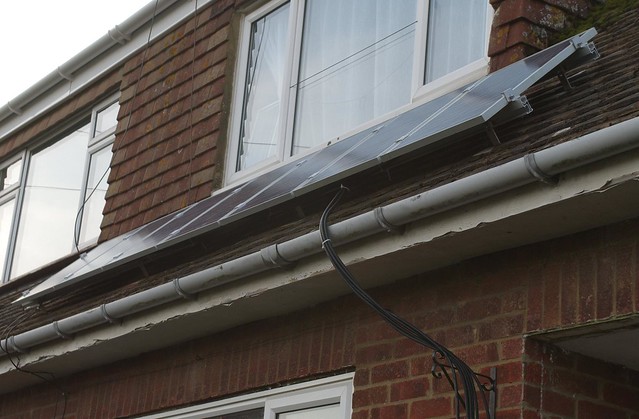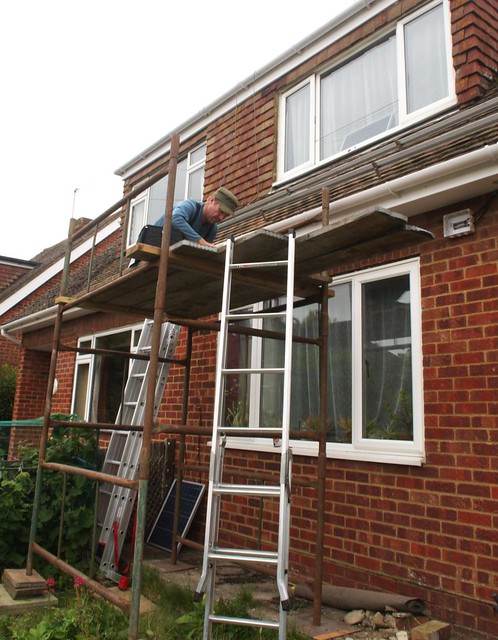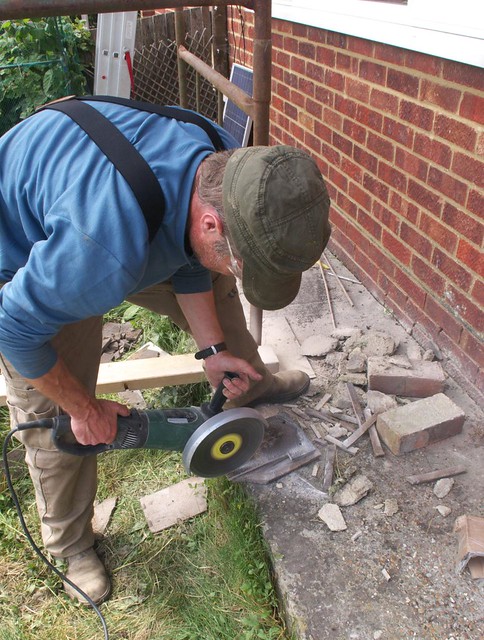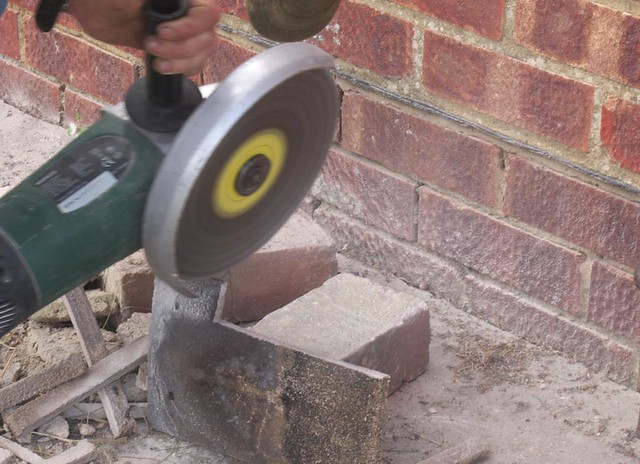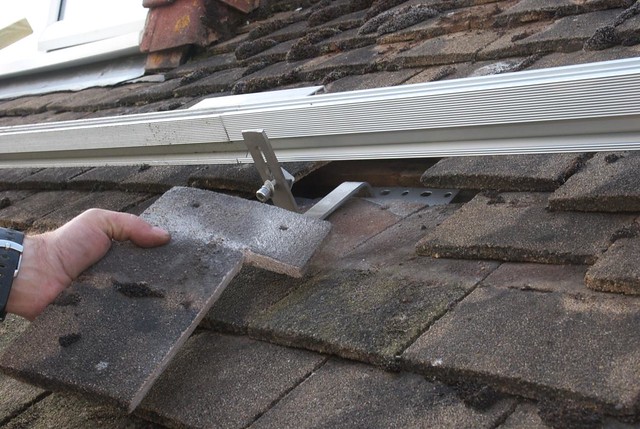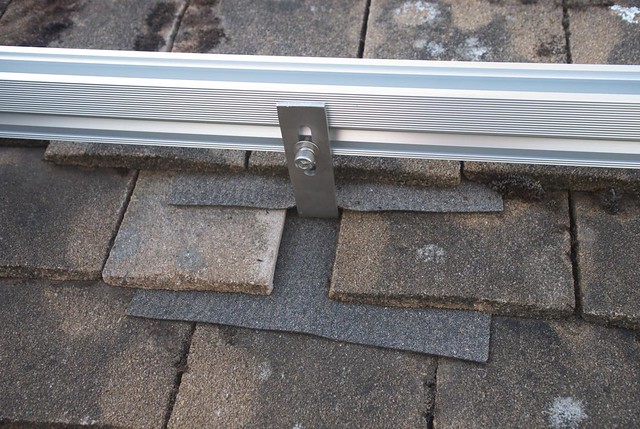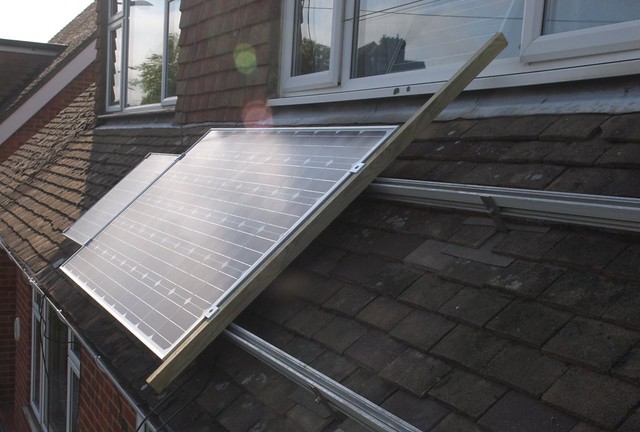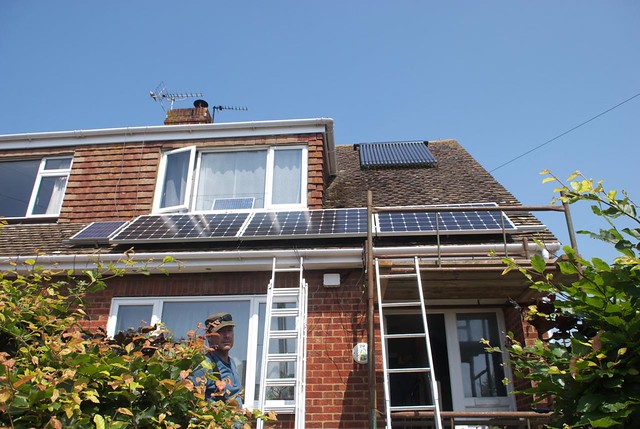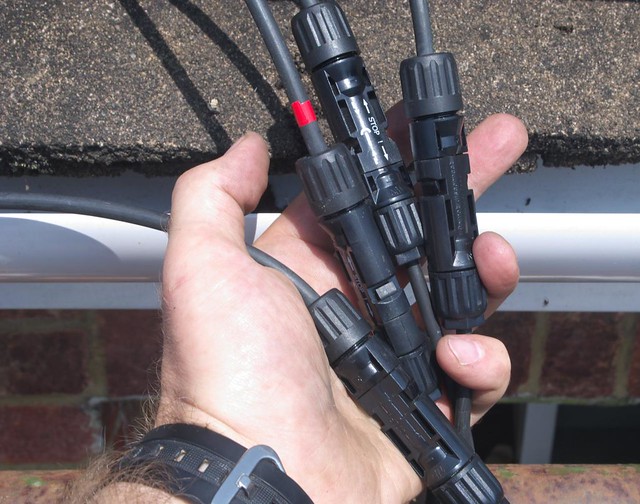Sorry there's been no posts for a while, but as you can see I've had a lot going on!
With the help of my friend Rich, I've upgraded our off-grid solar PV system, removing some of the panels we installed a couple of years ago and replacing them with some much larger models. Here's a video summarising what's been done:
And if you want more detail, here's a video of the installation of the new controller that's needed to handle the increased power - it's a Morningstar TriStar MPPT 60A.
And for those who are into technical stuff and software, here's a video showing what the software Morningstar provide can do to gather and display data on the controller's operation (best watched full screen in HD so you can see everything):
Here's the photos (some of which are in the first video above).
First, here's the original system. The reason for the upgrade is simply that prices of solar panels have dropped a lot, and doing an upgrade now meant that the same roof-mounting kit was still available to buy (just!) so I could extend the rails easily. I'm finding good homes for the old panels...
First we removed the old panels, which was easily done from a ladder:
After that we set up the scaffolding that Rich had brought:
Then we removed the top mounting rail, shifting it up a bit, and extended both rails to the right, using the extra kit I managed to source from Midsummer Energy - thanks for the help guys! We'd also got some advice from Midsummer Energy on installation, so we removed the tiles we'd lightly ground using an angle grinder last time, and made some more aggressive cuts into them to fit round the mounting brackets:
This enabled the tiles to fit much more neatly - some of the ones we did last time had broken since installation, probably due to the wind making the array flex and press on them.
We also put into practice some advice on adding a bit of felt just to ensure waterproofing, although in practice this area is under the panels so gets less wet anyway in the rain.
I'd also uncovered the manual for the mounting system on the internet, from Grace Solar in China. This included useful tips like how to slot in the connectors that the clamps screw into, without sliding them all the way along the rails - very useful to know! (see the video for more info)
The new panels are Suntech 250W monocrystalline, and as they weigh nearly 20kg each we had to come up with a way of keeping them in place while we got the next one ready. The solution was a piece of wood of the same thickness, which the mid-clamps could grip onto allowing the panel to be held while we moved the scaffolding and got the next one in place.
It wasn't long before all three new panels were up, and we've kept one of the old ones to run a small 12V system that's used for phone charging, running a laptop and powering the cockatiels' night light:
Wiring up the electrics was much easier than last time, partly because a lot of the wiring was already in place and could be reused, but also because the new panels came with MC4 connectors, so I was able to prepare cables and then just plug in!
So, the system has been up and running for a week now, the fridge and freezer have been off-grid continuously during that time and we've even done two loads in the washing machine off-grid! The new controller gives me loads of data, and the Mastervolt inverter we've added now is pretty neat too, so I might write another blog post later with some extra technical details...
Mike
Related posts:
- Insulating the cavity walls
- Insulating the loft
- Flat roof insulation
- Insulating the dormer roof
- Sweeping the chimney
- Installing the wood stove
- Plumbing and testing the wood stove
- Installing solar water heating
- Installing off-grid solar PV (part 1)
- Installing off-grid solar PV (part 2)
- Off-grid solar PV upgrade to 1250W
